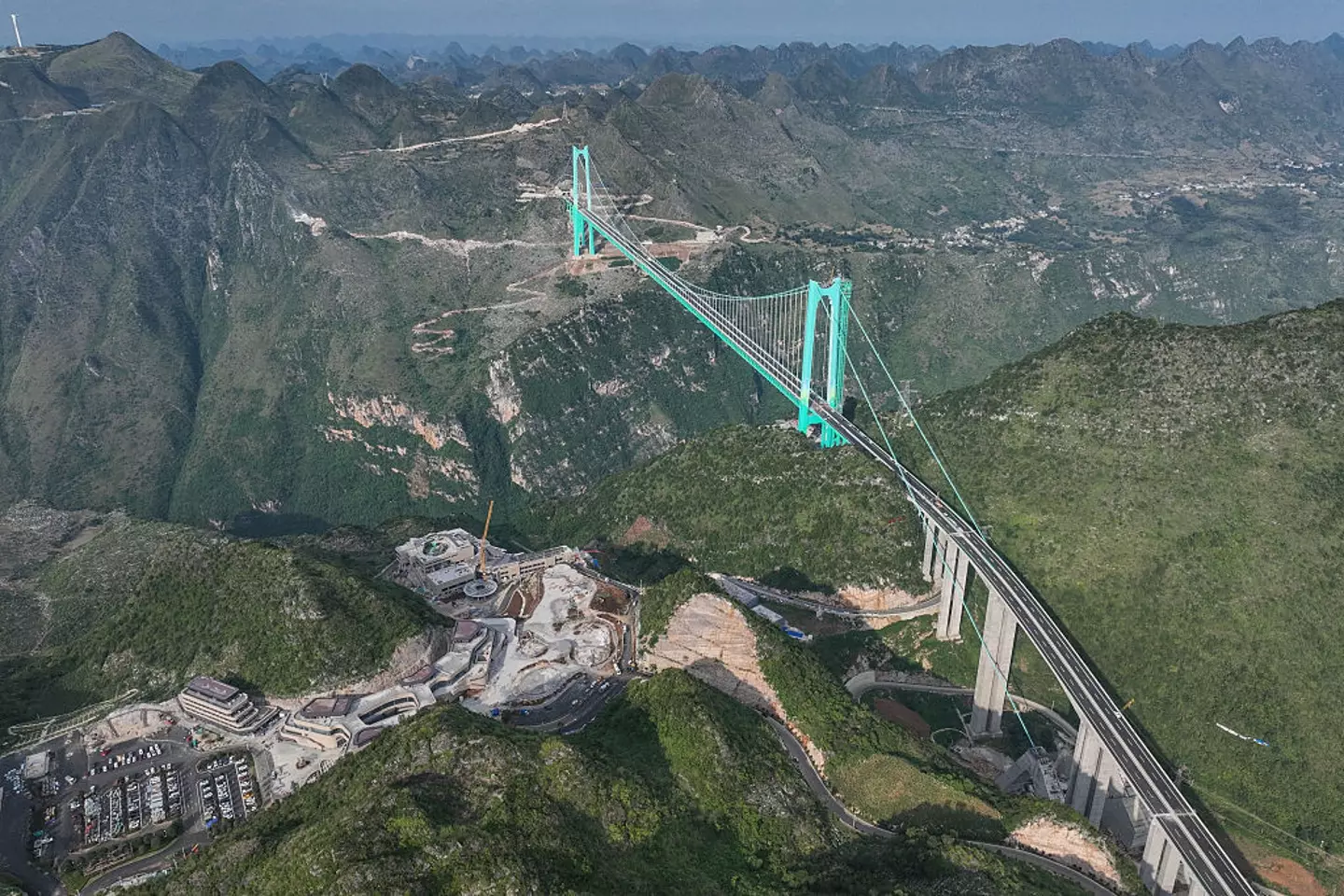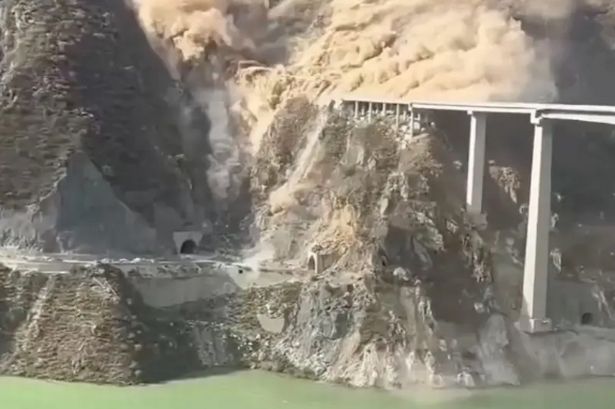Hongqi Bridge Collapse in Southwest China: What Happened and Why It Matters
In the rugged mountains of southwest China, a newly opened bridge — once hailed as a symbol of regional connectivity and engineering progress — has partially collapsed just months after opening. The incident took place on November 11, 2025, in Sichuan Province, along a key national highway that connects China’s interior with the Tibetan Plateau.
While there were no reported casualties, the event has sparked questions about infrastructure safety, environmental challenges, and the immense pressures faced by construction projects in some of the country’s most geographically demanding regions.
A Modern Link to the Highlands
The Hongqi Bridge, stretching 758 meters (2,487 feet) across the Dadu River near the city of Maerkang in Sichuan Province, was designed to serve as part of a vital transportation artery — a lifeline linking Sichuan’s heartland with Tibet.
The structure was opened to traffic earlier this year after several years of construction. Engineers and local officials celebrated it as a modern marvel, intended to improve trade, tourism, and emergency response capabilities across western China’s mountainous terrain.
The bridge’s strategic location along a national highway made it an essential component of the region’s economic and social development. For remote communities in the highlands, such infrastructure often represents access to better medical care, education, and market opportunities.
That’s why the sudden partial collapse of the Hongqi Bridge, only months after its grand opening, has drawn both public attention and concern.

Early Warning Signs: Cracks, Shifts, and Closures
According to the Maerkang city government, local authorities had already taken precautionary measures before the incident occurred.
On Monday, November 10, police closed the Hongqi Bridge to all traffic after engineers and monitoring teams detected cracks on nearby slopes and roads, as well as visible shifts in the mountain terrain surrounding the bridge.
These early warning signs prompted officials to act swiftly. The area was cordoned off, and vehicles were diverted to alternate routes. Within 24 hours, a section of the bridge had collapsed — footage of which soon appeared on Chinese social media platforms such as Weibo and Douyin, showing a large portion of the bridge’s deck breaking away and plunging downward.
The local government confirmed the collapse but emphasized that no injuries or deaths were reported, thanks to the prior evacuation and closure.

Investigations Underway
An official investigation is now underway to determine the cause of the collapse. While the precise reasons remain unclear, experts suggest several possible contributing factors:
-
Geological Instability:
The Sichuan-Tibet corridor is one of the most geologically active areas in the world, lying near several tectonic fault lines. Mountain slopes in this region are prone to landslides, soil erosion, and ground movement, especially during or after periods of heavy rain. -
Subsurface Shifts:
Reports from local engineers mentioned terrain shifts prior to the collapse. These could have been triggered by natural ground movement or changes in the river’s flow affecting the bridge’s foundations. -
Design and Material Stress:
Newly built bridges undergo intense stress during their first few months of operation as they settle and respond to environmental conditions. If certain materials or design calculations failed to account for this stress, it could have weakened structural integrity. -
Environmental Impact:
The combination of seasonal rainfall, fluctuating temperatures, and mountainous topography often creates unpredictable stress points in large infrastructure projects.
Officials from the Sichuan Provincial Department of Transport have dispatched technical experts and geologists to examine the site, collect samples, and assess the stability of the surrounding area.

A Region of Beauty and Risk
The Hongqi Bridge is located in western Sichuan, a region celebrated for its dramatic mountain landscapes, deep valleys, and cultural diversity. But it is also an area known for frequent landslides and seismic activity.
Over the past decade, China has invested heavily in expanding transportation links in this area — including expressways, tunnels, and bridges — to better integrate the plateau economy with the rest of the country. However, engineers face persistent challenges: unstable geology, extreme weather conditions, and steep terrain that complicate foundation work.
Experts note that even with cutting-edge engineering, nature often tests infrastructure in these regions. Landslides, soil liquefaction, and slow-moving ground shifts can all compromise stability, sometimes months or years after a project’s completion.
Infrastructure Growth and Safety Challenges
China’s infrastructure development over the past two decades has been unprecedented in scale and speed. From high-speed rail networks to mega-bridges and mountain expressways, the country has built an extensive modern transport system to connect remote regions with major urban centers.
While the results are often impressive, they also highlight the ongoing balance between ambition and safety. In the last few years, Chinese authorities have strengthened safety protocols and required post-construction monitoring systems for major bridges, especially in mountainous and seismic areas.
In the case of the Hongqi Bridge, it appears that monitoring systems and early response measures were in place — as indicated by the timely closure before the collapse. Analysts have pointed out that the lack of casualties demonstrates effective emergency management.
Still, the incident raises questions about long-term resilience, particularly for infrastructure built in regions where geological risks are high and environmental monitoring must be continuous.

The Human Side: Communities Cut Off
For residents of Maerkang and nearby areas, the bridge was more than just a structure — it was a vital connection.
Its closure and partial destruction have disrupted travel between several mountain towns, affecting local trade and daily life. Supply routes for agricultural goods, fuel, and building materials have had to be rerouted, adding hours to travel time.
Local businesses that depended on through traffic — small restaurants, shops, and transport services — now face temporary slowdowns. Authorities are currently working to set up temporary crossings and restore road connectivity as quickly as possible.
Environmental and Engineering Experts Weigh In
Following the collapse, Chinese civil engineering experts and academics have been discussing the implications of the incident online and in state media.
Professor Zhang Wei, an infrastructure specialist at a Sichuan-based university, commented that the case underscores the need for real-time geological monitoring and adaptive design standards for bridges in mountainous areas.
He noted that “even with the most advanced materials, a structure’s safety is always tied to the stability of the land it rests upon. Continuous movement underground can create invisible tension points that only become visible under stress.”
Others have called for expanded use of satellite-based terrain observation and AI-driven geological models to predict slope instability before it becomes dangerous.
The Broader Context: Adapting to a Changing Environment
Climate and environmental changes are intensifying existing risks in western China’s mountainous areas. Unusually heavy rainfalls, melting permafrost, and fluctuating ground temperatures can all accelerate soil movement and rock instability.
In this context, modern infrastructure design must increasingly account for long-term environmental shifts, not just short-term engineering standards.
China has already been investing in advanced landslide monitoring systems, using drones and remote sensors to detect micro-movements in mountain slopes. The Hongqi Bridge collapse may accelerate the rollout of such technologies to more regions.

Government Response and Next Steps
Local authorities have pledged a comprehensive investigation and immediate measures to ensure public safety. Engineers are inspecting other bridges and roads in the same corridor to assess potential vulnerabilities.
Officials from the Ministry of Transport have urged provincial governments to strengthen supervision of infrastructure built in high-risk zones and to reinforce emergency response protocols.
For the Hongqi Bridge site, reconstruction planning will only begin after the full investigation is complete. Engineers must first confirm that the ground beneath the structure is stable and that any future rebuild will not face the same underlying risks.
Lessons for Future Infrastructure
The Hongqi Bridge incident offers valuable lessons for infrastructure projects not just in China, but worldwide. As countries continue to expand transportation networks into more challenging environments, resilience and sustainability must take priority over speed and scale.
Key lessons include:
-
Continuous monitoring of terrain and foundations after completion.
-
Early-warning systems linked to weather and geological data.
-
Community awareness and evacuation readiness in high-risk zones.
-
Engineering adaptation to account for climate and environmental changes.
Ultimately, the event reinforces the principle that safety and maintenance are as important as construction itself.
A Bridge Between Progress and Caution
The partial collapse of the Hongqi Bridge is a reminder of both human achievement and vulnerability. It represents the extraordinary ambition of modern infrastructure — and the enduring power of nature.
While the quick action of local authorities prevented tragedy, the event serves as a wake-up call for builders and policymakers alike: innovation must always walk hand in hand with vigilance.
As Sichuan’s mountains continue to challenge engineers and inspire travelers, the story of the Hongqi Bridge will likely shape how China — and the world — thinks about building safely in a changing landscape.


